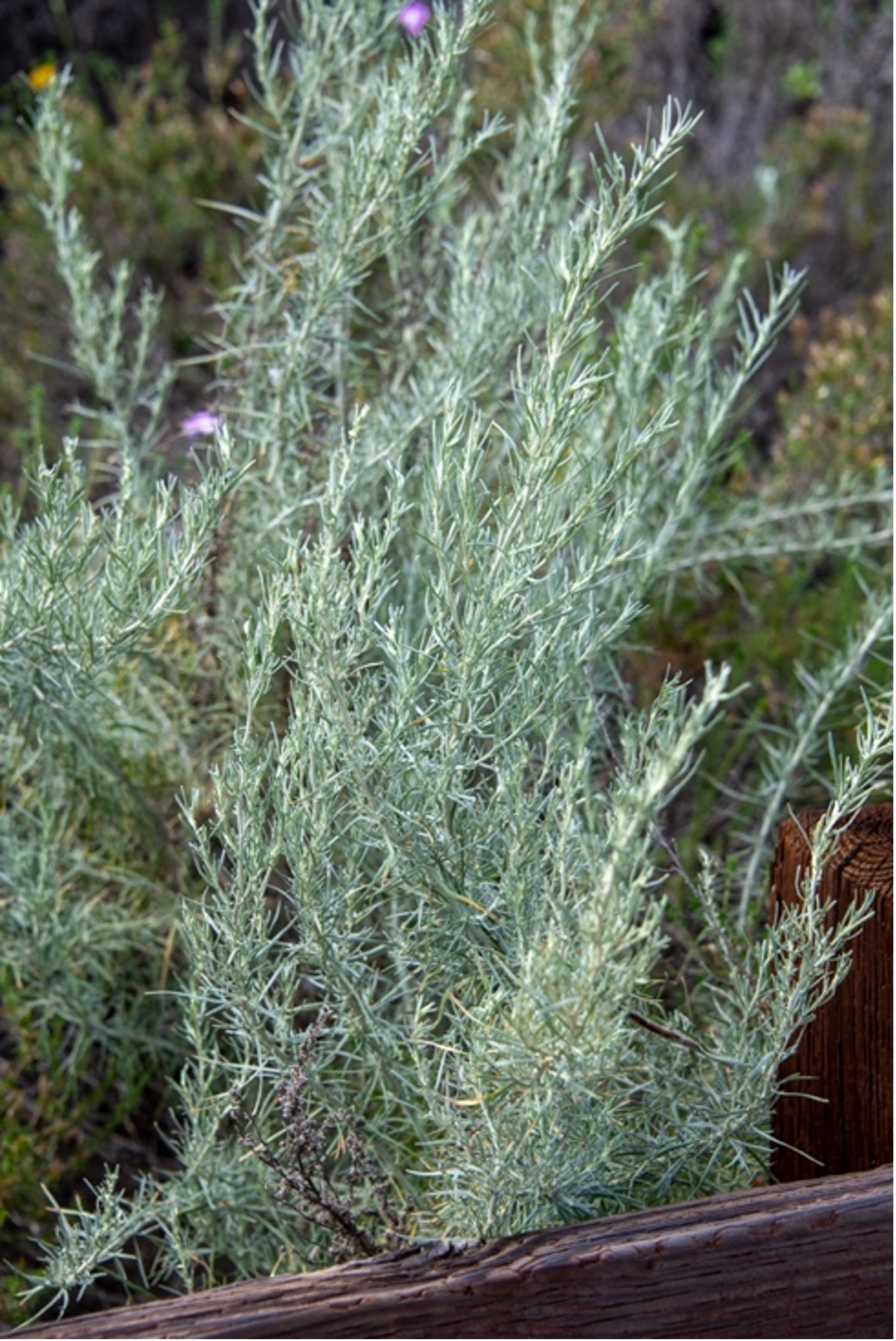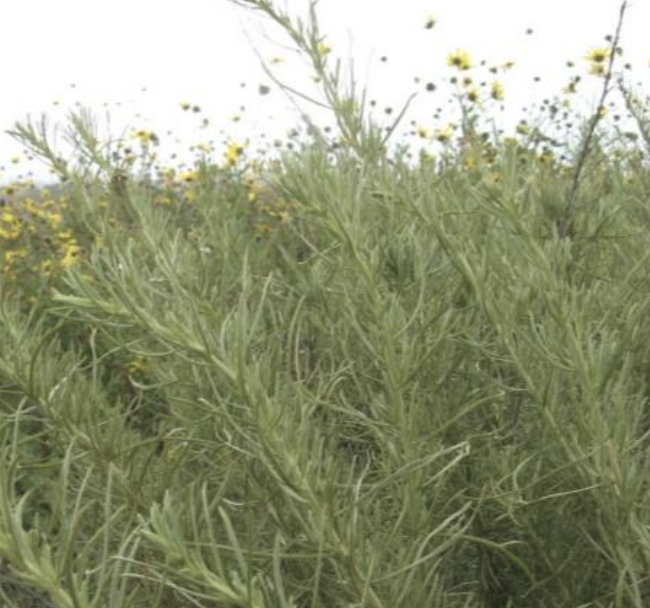

Sagebrush
California sagebrush is not a true sage; true sages are in the genus Salvia. Leaves may also have the ability to wilt in the absence of water and to recover quickly with rain.
Kumeyaay would rub themselves with sagebrush to disguise their human odor. The function of aromatic compounds (terpines) in the leaves is uncertain, but there are several theories: terpines released from leaves may inhibit germination of seeds below the plant, reducing competition (allelopathy); they are unpalatable and may reduce grazing; they are highly flammable and may help a fire to move quickly without damaging the root stock. Western American "Cowboys" would rub this over themselves, giving it the name "Cowboy Cologne".
In coastal Southern California, Native Americans used California sagebrush as a soothing medicine for poison oak, ant bites and measles, and as a tea for general illness. Wood was used for tools and construction. The leaves were dried and smoked as tobacco, and the plant was used in a variety of ceremonies. Kumeyaay Indians rubbed themselves with sagebrush to disguise their odor when hunting.
Although seeds were occasionally used for flour, food did not appear to be a major use. Early miners are said to have used sagebrush to repel fleas, and others have used sagebrush twigs in sneakers to cure athlete’s foot.
